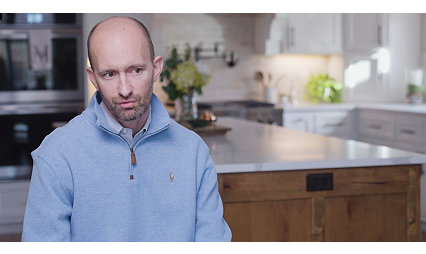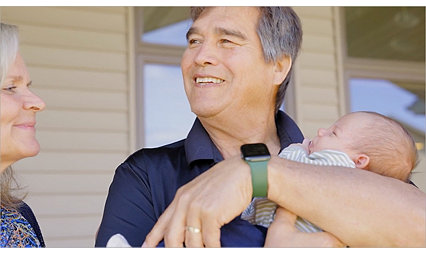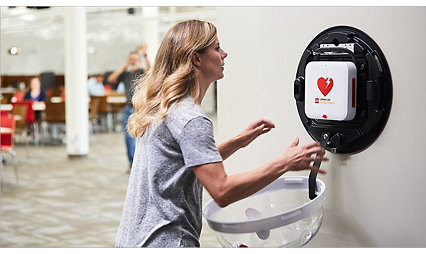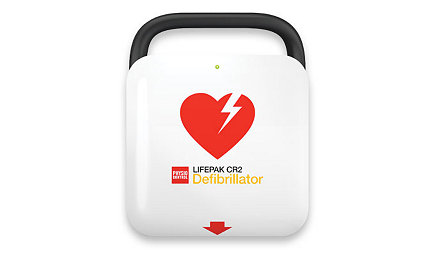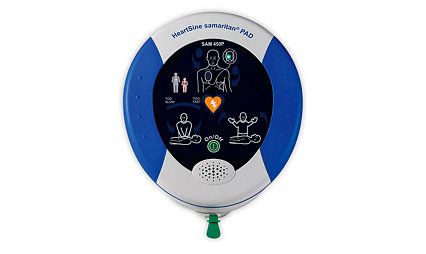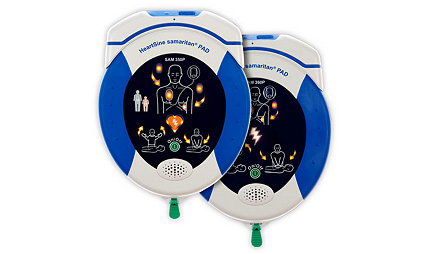Be prepared for a sudden cardiac arrest — even before EMS arrives
An AED program is a critical link in the chain of survival, empowering you to deliver lifesaving intervention before an EMS team arrives. Did you know that each minute that passes after a sudden cardiac arrest cuts the chances of survival by 7-10%?1 With more than a million AEDs deployed globally, Stryker offers diverse options and deep expertise to help you choose the right device and cost-effectively manage your AED program.
AEDs in the community and workplace
AEDs can help enhance preparedness and the ability to respond to cardiac emergencies. Learn more about the impact of AEDs in our communities and workplaces, from increasing survival rates to promoting a culture of emergency preparedness.
Athletics
Sudden cardiac arrest can strike even the healthiest athletes without warning. Learning how to use an AED properly can help save a life.
Learn moreEducation
Whether a student, teacher, parent or staff member—be prepared to help save a life when sudden cardiac arrest strikes. Help your team feel confident using an AED, and equip your schools with the knowledge and tools they need to help save lives today.
Learn moreLaw enforcement
In law enforcement, you know you can’t predict when an emergency strikes, but you can be prepared. Sudden cardiac arrest can happen to anyone, anywhere. Stay ready with AEDs in police vehicles. Be prepared for sudden cardiac events, anywhere, anytime.
Learn moreHold on to the moments that matter
Be ready to act when sudden cardiac arrest strikes
Life is built from small moments—coffee before sunrise, sideline cheers, a hand squeezed at the right time. Sudden cardiac arrest can happen to anyone, anywhere, interrupting those moments without warning. Our latest video shows us what’s worth protecting and how being prepared can help.
Tell us your cardiac arrest story
EC-GSNPS-SYK-2235972
Survivor: Derrick Mosley
After going on a morning run, Derrick began to feel some chest discomfort. His wife, Melissa, a healthcare professional trained in resuscitation, quickly recognized the warning signs of a sudden cardiac arrest. Luckily, an off-duty firefighter pulled over from traffic and began assisting. Soon EMS and Fire/Rescue units arrived to apply a LUCAS.
Learn moreSurvivor: Esley Thorton
The most important thing to Esley Thorton is his family. Watch how they each played a role in saving his life with the help of an AED they keep in their kitchen pantry.
Learn moreSurvivor: Bennett Hart
A rare genetic condition caused Bennett Hart’s heart to stop three times between the ages of 8 and 15. Watch how this determined student athlete overcomes every obstacle with the support of his friends and family.
Learn moreSurvivor: Jordan Schoen
Jordan Schoen was only 17 when he collapsed on the basketball court. Watch to learn how the system of care saved his life and why this experience drove his family to give back to their community.
Learn moreLearn more about sudden cardiac arrest
Here are several resources on why AEDs matter. Click here to view more on the Emergency Care newsroom.
Saving young hearts: AED placement strategies for K-12 schools
Sudden cardiac arrest impacts people of all ages, and each year, 7,000 children and teens are affected.1 While the focus is often on student-athletes, research shows that sudden cardiac arrest is more common among non-athlete students in school settings.
Learn moreGame-changer in emergency preparedness
In a world where emergencies can strike at any moment, being prepared isn't just important—it's essential. With over 30 years of experience in both college and professional sports, Darryl Conway is committed to improving emergency response protocols. Recently, he shared his insights on the ABCDEFG method—a practical approach to handling sudden cardiac arrest.
Learn moreKnowing when to use an AED: CPR and AED guidelines for sudden cardiac arrest
When to use an AED is crucial in sudden cardiac arrest situations. Learn how to recognize sudden cardiac arrest symptoms and act promptly to help increase the chance of survival.
Learn moreAED buying guide
An effective AED program is a critical link in the chain of survival, empowering you to deliver lifesaving intervention even before emergency services arrive. Stryker offers diverse options to help you choose the right defibrillator for your employees and customers.
Learn moreHow to prepare your workplace for a sudden cardiac emergency
A workplace emergency is an unforeseen event that can endanger your employees or customers. These incidents can disrupt or shut down your operations. While you can never be fully prepared for every emergency, developing a plan of action prior to a possible emergency is key to responding in a timely and appropriate manner.
Learn moreDefibrillator 101
Defibrillators detect the heart’s rhythm and send potentially lifesaving shocks to the heart if needed. They can help correct an arrhythmia and restore a normal heartbeat if the heart suddenly stops beating.
Learn more
Pay it forward
Forward Hearts lets survivors of a sudden cardiac arrest event pay it forward and potentially save another life by donating an automated external defibrillator (AED) to the organization of the survivor's choice.
Interested in learning more? Connect with an expert
1: Part 4: The Automated External Defibrillator. (2000). Circulation,102 (suppl_1). https://doi.org/10.1161/circ.102.suppl_1.i-60
AED users should be trained in CPR and in the use of the AED. Some AEDs for public use/trained users and can be used also by professional users. AEDs are indicated for use on adults and children. Certain AEDs may be used on children 1-8 years of age weighing less than 25 kg (55 lbs) but some models required separate defibrillation electrodes.
EC-GSNPS-SYK-1081840_REV-2_en_us







